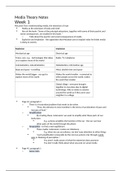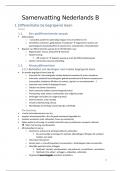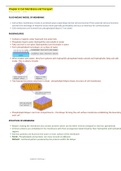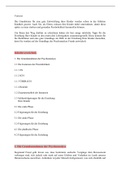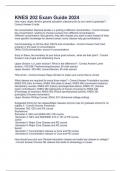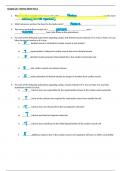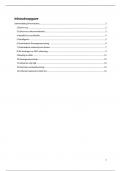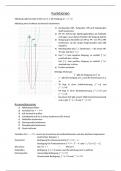UNIT – III
Building blocks of Computer: Anatomy of Digital Computer : Functions of CPU ,
ALU and Control Units.
Data Storage: Introduction – Memory Units : RAM, ROM, EPROM,EEPROM.
Building blocks of Computer:
Main Memory
Memory enables a computer to store, at least temporarily, data and programs
Output Device
The results that are stored in the memory can be transformed into a form that can
be understood by users of a computer system by means of an output device. Some
common output devices are monitor, printer, speaker etc.
Mass storage Device
These devices allow computer to permanently retain large amounts of data.
Common mass storage device include disk drives and tape drives.
Central Processing Unit (CPU)
The CPU or processor is the brain of computer. It is the component that actuallu
executes the instructions. The CPU itself has three components, namely, arithmetic
logic unit (ALU), control unit (CU), and memory unit (MU).
Arithmetic Logic Unit:-
Arithmetic logic unit (ALU) performs two types of operations- arithmetic and
logical. Fundamental arithmetic operations include addition, subtraction,
multiplication, and division. Logical operations include comparisons like equal to,
less than, greater than etc.
Control Unit:-
Control unit (CU) coordinates and controls the operations of a computer system. It
controls the activities between memory and ALU and between CPU and
input/output devices.
Memory Unit:
A memory unit (MU) is also called primary memory or main memory or RAM
(random access memory). It holds data for processing, instructions for processing
data (program), and information (processed data). The contents of main memory
are lost when the computer is turned off.
, instructions (a program). Modern computers are electronic and digital. The actual
machinery - wires, transistors and circuits is called hardware; the instructions and
data are called software.
All general purpose computers require the following hardware components:
(i) Central Processing Unit (CPU): The ‘brain’ of the computer, themcomponent
that actually executes instructions.
(ii) Memory : It enables a computer to store, at least temporarily, data and
programs.
(iii) Input device : Usually a keyboard or mouse is used to read data and programs
into the computer.
(iv) Output device: A display screen, printer, etc. that lets you see what the
computer has accomplished.
(v) Mass storage device: It allows a computer to permanently store large amounts of
data. Common mass storage devices include disk drive and tape drive.
vi)Memory - also known as the primary storage or main memory - is a part of
thevmicrocomputer that holds data and instructions. Part of the contents of the
memory is held only temporarily, that is, it is stored only as long as the
microcomputer is turned on. When you turn the machine off, the contents are lost.
The capacity of the memory to hold data and program instructions varies in
different computers. The original IBM PC could hold approximately several
thousand characters of data or instructions only. But modern microcomputers can
hold millions or even billions of characters in their memory.
vii)Registers:Computers also have several additional storage locations called
registers. These appear in the Control Unit and ALU and make processing more
efficient. Registers are a sort of special hi-speed storage areas that hold data and
instructions temporarily during processing. They are parts of the Control Unit and
ALU rather than the memory. Their contents can, therefore be handled much faster
than the contents of the memory.
viii)Addresses:To locate the characters of data or instructions in the main memory,
the computer stores them in locations known as addresses. A unique number
designates each address. Addresses can be compared to post office mailboxes. Their
numbers remain the same, but contents continuously change.
Functions of CPU , ALU and Control Units.
CPU (central processing unit)
Building blocks of Computer: Anatomy of Digital Computer : Functions of CPU ,
ALU and Control Units.
Data Storage: Introduction – Memory Units : RAM, ROM, EPROM,EEPROM.
Building blocks of Computer:
Main Memory
Memory enables a computer to store, at least temporarily, data and programs
Output Device
The results that are stored in the memory can be transformed into a form that can
be understood by users of a computer system by means of an output device. Some
common output devices are monitor, printer, speaker etc.
Mass storage Device
These devices allow computer to permanently retain large amounts of data.
Common mass storage device include disk drives and tape drives.
Central Processing Unit (CPU)
The CPU or processor is the brain of computer. It is the component that actuallu
executes the instructions. The CPU itself has three components, namely, arithmetic
logic unit (ALU), control unit (CU), and memory unit (MU).
Arithmetic Logic Unit:-
Arithmetic logic unit (ALU) performs two types of operations- arithmetic and
logical. Fundamental arithmetic operations include addition, subtraction,
multiplication, and division. Logical operations include comparisons like equal to,
less than, greater than etc.
Control Unit:-
Control unit (CU) coordinates and controls the operations of a computer system. It
controls the activities between memory and ALU and between CPU and
input/output devices.
Memory Unit:
A memory unit (MU) is also called primary memory or main memory or RAM
(random access memory). It holds data for processing, instructions for processing
data (program), and information (processed data). The contents of main memory
are lost when the computer is turned off.
, instructions (a program). Modern computers are electronic and digital. The actual
machinery - wires, transistors and circuits is called hardware; the instructions and
data are called software.
All general purpose computers require the following hardware components:
(i) Central Processing Unit (CPU): The ‘brain’ of the computer, themcomponent
that actually executes instructions.
(ii) Memory : It enables a computer to store, at least temporarily, data and
programs.
(iii) Input device : Usually a keyboard or mouse is used to read data and programs
into the computer.
(iv) Output device: A display screen, printer, etc. that lets you see what the
computer has accomplished.
(v) Mass storage device: It allows a computer to permanently store large amounts of
data. Common mass storage devices include disk drive and tape drive.
vi)Memory - also known as the primary storage or main memory - is a part of
thevmicrocomputer that holds data and instructions. Part of the contents of the
memory is held only temporarily, that is, it is stored only as long as the
microcomputer is turned on. When you turn the machine off, the contents are lost.
The capacity of the memory to hold data and program instructions varies in
different computers. The original IBM PC could hold approximately several
thousand characters of data or instructions only. But modern microcomputers can
hold millions or even billions of characters in their memory.
vii)Registers:Computers also have several additional storage locations called
registers. These appear in the Control Unit and ALU and make processing more
efficient. Registers are a sort of special hi-speed storage areas that hold data and
instructions temporarily during processing. They are parts of the Control Unit and
ALU rather than the memory. Their contents can, therefore be handled much faster
than the contents of the memory.
viii)Addresses:To locate the characters of data or instructions in the main memory,
the computer stores them in locations known as addresses. A unique number
designates each address. Addresses can be compared to post office mailboxes. Their
numbers remain the same, but contents continuously change.
Functions of CPU , ALU and Control Units.
CPU (central processing unit)

